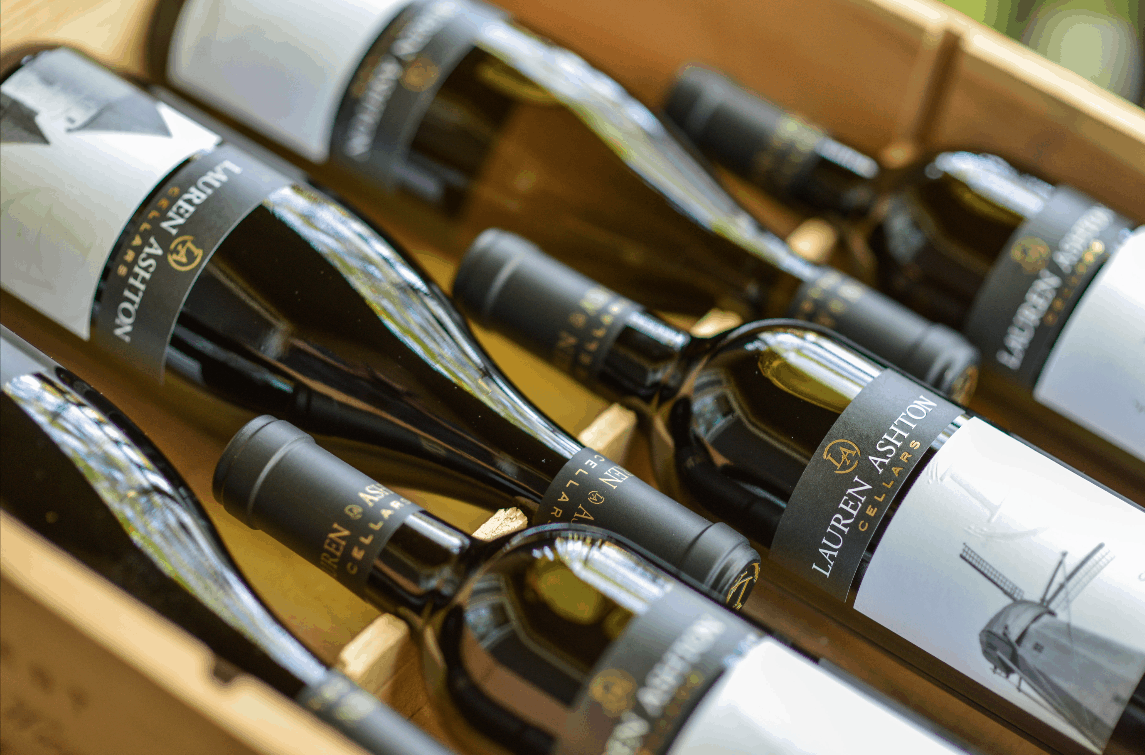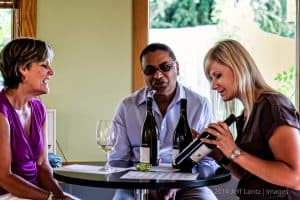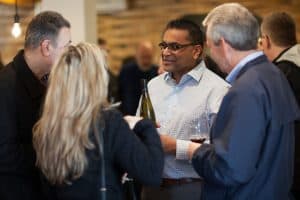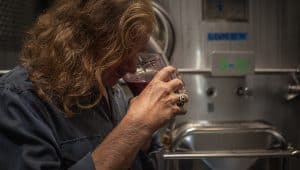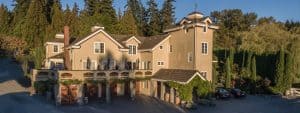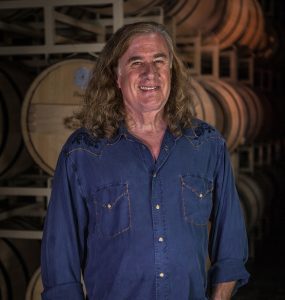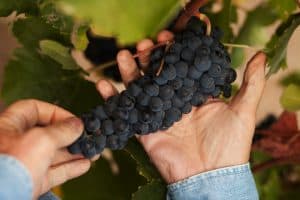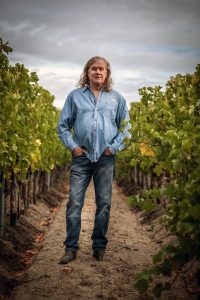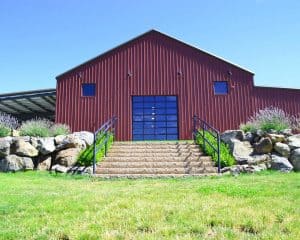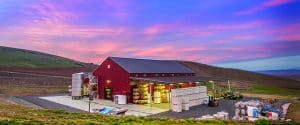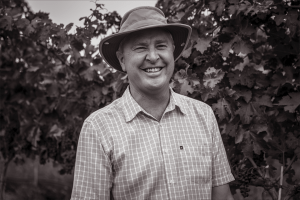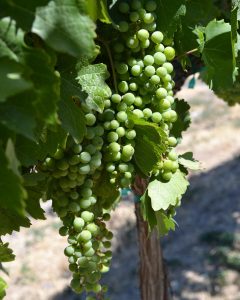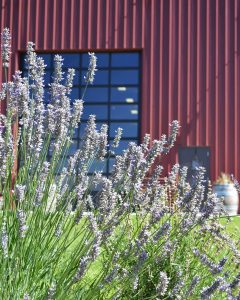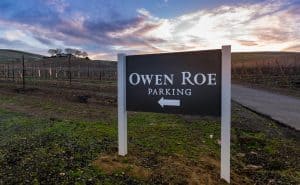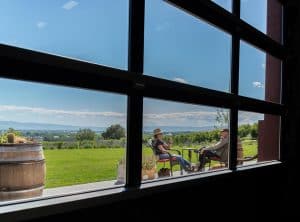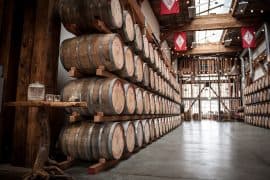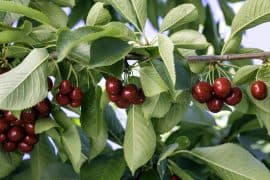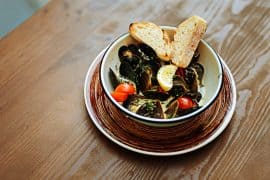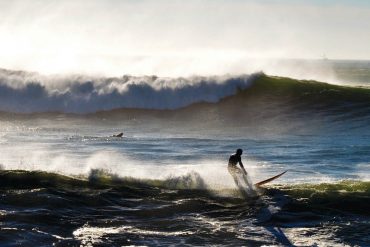Washington vintners talk soil and sense of place
written by Naomi Tomky
From a Trinidadian dentist to an Irish philosopher, the Washington wine world brings together all types in pursuit of producing a better vintage. Walla Walla grows grapes in the shadows of the rolling Palouse hills, and Yakima Valley sprouts vines from its rocky soil. Each part of the state defines its wine with its landscape and climate, contributing its distinct terroir to Washington’s wine industry. But with fourteen regions defined as their own AVA (American Viticulture Area) producing 222,000 tons of different grapes, little unifies the wines of Washington other than the enthusiasm and commitment of those who make it.
Below, four winemakers share the qualities of region and how their passion for Washington wine shaped their careers.
Woodinville
Kit Singh
It sounds like the beginning of a joke: What do dentistry and winemaking have in common? But according to Kit Singh, more than you might imagine. The impressive, accessible wine that the Trinidadian immigrant makes at Lauren Ashton Cellars proves remarkable on its own. That the ambitious winemaker does it in his spare time is simply jaw-dropping. Singh moved to Washington to go to college and discovered his love for wine—a passion that he sidelined as he completed dental school. Through starting his practice and paying school loans, his interest in the industry never waned. Finally he reached the point where he could follow his heart, through educational programs at the University of California-Davis and South Seattle College, and by volunteering locally at DeLille.
Named for Singh’s children, Lauren Ashton in Woodinville draws on some of Singh’s unique attributes as a winemaker to produce better wine. “I’m very detail-oriented,” he said, comparing the minutia of winemaking to working on the tiniest of teeth. But he also knows the best wine comes out of the greater community, which is why he had no complaints that his dental practice kept him from starting his winery closer to where his grapes grow. “It’s a competitive industry,” he said, “but there’s a lot of usefulness in being nearby. Logistically, Woodinville made a lot of sense.” He found the community of winemakers to be a great resource, for advice or for borrowing equipment. The concentration of wine cellars in Woodinville provides a well-established route for Singh to source fruit from Yakima Valley, Columbia Valley and Red Mountain. For the general wine enthusiast, Woodinville is a mecca of easily access great local wines a short hop from Seattle.
The Commons: Comfort food goes creative here, where fried chicken sandwiches come with house-made kimchi while the wine stays close to home, featuring Woodinville’s best and Washington classics.
Barking Frog: Forget what you know about hotel restaurants—expert sommeliers here will pair a local bottle from the extensive list with produce from the garden and dishes inspired by the great nearby.
Village Wines: A cozy bar and wine shop that offers a casual place to grab a snack and taste wines from around the state—including some of Woodinville’s best—before you buy.
Red Mountain
Chris Upchurch
Chris Upchurch is widely considered one of Washington’s best and most creative winemakers for his work at DeLille Cellars, as well as his own personal project, Red Mountain’s Upchurch Vineyard. Upchurch learned his craft from one of Washington wine’s founding fathers, David Lake, at Columbia Winery before starting DeLille in 1992. “I wanted to make Bordeaux blends—nobody was making them here, and just a few were in California,” he recalled. With classical training and lessons gleaned from his travels, he hoped to blend varietals and to develop a new style in the region.
At Red Mountain, he found a place where big cabernet grapes weren’t just powerful and rich, but had structure he could build on, that he could layer with the rest of the blend’s grapes. “The Old World is famous for structure and acidity. New World grapes always achieve ripeness, but it often means more alcohol and less acidity.” When he and his partners in DeLille bought Red Mountain Vineyards, he recognized the area’s combination of both features. Upchurch credits the instant success of DeLille’s blends to Red Mountain’s signature mix of structure and ripeness, and is now bringing that to his latest project, Upchurch.
On Red Mountain, Upchurch finds a vineyard and a laboratory. “I’m basically taking what Mother Nature gave us a long time ago, and seeing where it can go,” he said. “The future is the same—discover what this small appellation can give us.”
DeLille: Upchurch’s original foray into Red Mountain Bordeaux blends still produces some of the region’s best after a quarter century.
Col Solare: A collaboration between a Tuscan winemaker and a Northwest winemaker turns out Cabernet-based, globally-inspired wines that remain firmly rooted in the Red Mountain soil.
Fidelitas: As the name implies, this winery from a long-time veteran of Chateau Ste. Michelle stays faithful to the tradition of Bordeaux varietals to elevate the Red Mountain grapes.
Yakima
David O’Reilly
The agrarian lifestyle appealed to David O’Reilly. After growing up in Belfast during the Troubles, “you were always looking over your shoulder. … The danger was palpable.” Long before he started making wines at Owen Roe, his Yakima Valley winery, he first tasted rural life at his family’s farm. “It was such an oasis to go to the Republic [of Ireland], to live on the farm. That was heaven.”
At 17, he left Northern Ireland for rural British Columbia, where his large family (twelve siblings) subsistence-farmed while their father, a professor, passed on his love of debate. Moving to Santa Barbara for college, O’Reilly threw himself into the study of philosophy, but the nearby wine country captured his heart. “I knew it’s what I wanted to do,” he said. As he graduated from scrubbing floors at a winery to more advanced jobs, his industry knowledge and stature grew.
After helping a friend scout Columbia Valley grapes in the early ’90s, O’Reilly kept the Yakima area on his radar, even as he made wines in Oregon. With its long, sunny days and unmistakable New World ripeness, Yakima Valley, O’Reilly knew, would be the plot for a world-class cabernet. Soon, he got wind of a winery that couldn’t get the yield it wanted out of the land because of the stony soil. He visited and walked the steep hillside that winter.. It was then that O’Reilly knew that Yakima Valley’s higher elevations were worthy of a Grande Cru. “You couldn’t dial in better conditions for wines that taste good today and stand the test of time.”
Owen Roe: O’Reilly still makes the big wines that drew him to the region, keeping them consistently impressive throughout the years and adorning them with gorgeous, artistic labels.
JB Neufeld: A personal project from the head winemaker of the acclaimed Gilbert Cellars, it focuses on the specifics of what the same wine made from different vineyards tastes like.
Syncline Winery: Though the winery is located just south of Yakima in the Columbia Gorge area, many of its wines come from its Boushey Vineyard collection, including an intriguing and complex Syrah.
Walla Walla
Anna Schafer
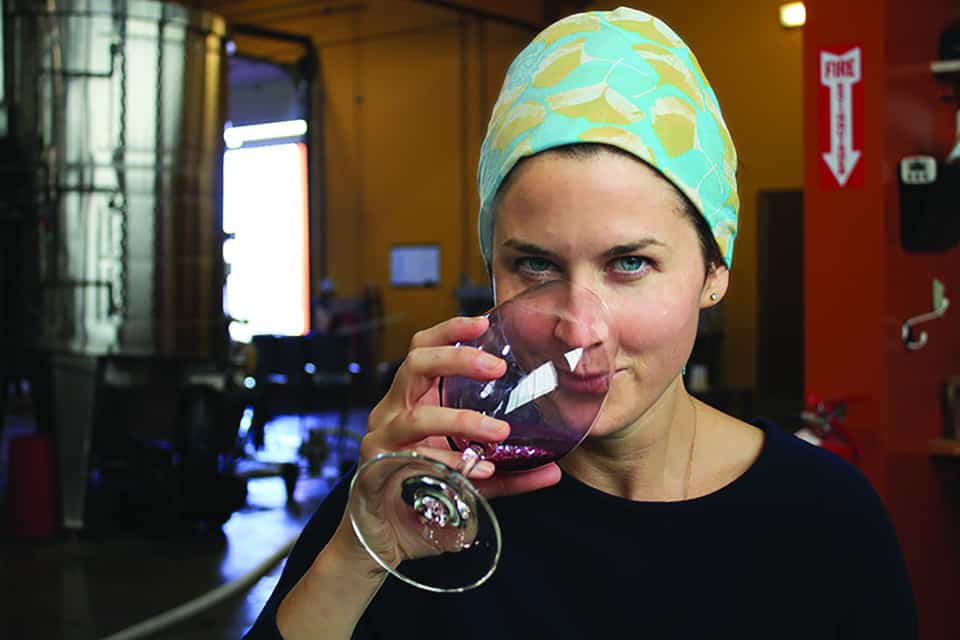
àMaurice Cellars is a family operation. Winemaker Anna Schafer inherited her love for and knowledge of wine from her father, and now she works alongside her parents and siblings at one of Washington’s finest boutique wineries. At the Schafer family dinner table, everyone came together over mom’s incredible cooking and hashed out big ideas—like starting a winery. They ended up planting 11 acres on a south-facing slope in Walla Walla, next to Leonetti’s Cab reserve program.
While planting vines adjacent to a Leonetti vineyard was an asset to the family, the Shafers were ultimately attracted by the Walla Walla community. “It was a big, huge hug when we showed up,” Schafer said. Norm McKibben of Pepper Bridge (a founding father of the industry) sent over a bottle of wine when they first arrived, along with a note that high tide floats all boats. “They wanted to make sure we made a wine worthy of the valley.”
Praise and awards soon found Schafer’s wines. Anna Shafer lauds the rich land, quoting Jeb Dunnuck of Wine Advocate, who noted that the valley has “the most specific terroir in the world, the most pungent example of terroir.” Aside from the land, weather in the valley provides another compelling feature. àMaurice practices dryland farming—it hasn’t irrigated its vines in years. The vineyard uses very little water to make very good wines. In an age of global warming, Schafer feels that this style of farming that uses minimal water will sustain Walla Walla’s vaunted position in the industry.
Brasserie Four: A cozy and casual French restaurant with a wine shop attached, from which diners can select local (as well as imported) bottles to go with their escargots, oysters, or croque monsieur.
The Ox & Cart: Local wines match up to the regional ingredients on a menu that would be as at home in San Francisco or Seattle as it is here in the rural corner of the state: lamb tartare, slow-smoked Kurobota pork, and fried chicken and waffles.
Whitehouse-Crawford: It’s the place to dig into everything from classic steak to Vietnamese fried calamari, but it’s the wine list—including an extensive Walla Walla section—that sets it apart.


